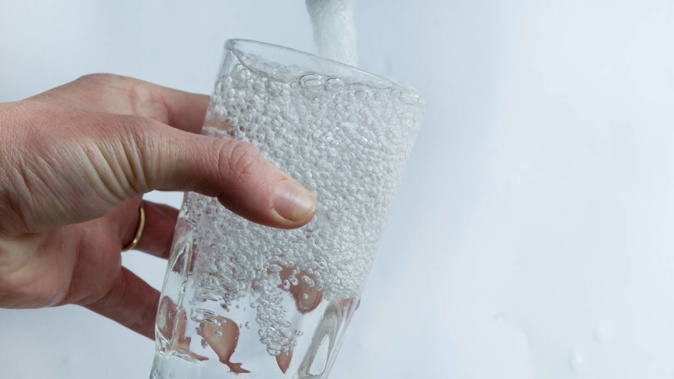
A new analysis of national groundwater data has shown concerning trends in areas with intensive farming, where detections of harmful E. coli bacteria have been rising.
The latest monitoring results from the collaborative Land, Air, Water Aotearoa (Lawa) project also revealed that, while nitrate concentrations had remained steady over that period, some pockets were continuing to record levels above current maximum drinking water standards.
The analysis showed there’d been at least one E. coli detection at around half of a subset of wells within the past five years, with groundwater supplies considered “widely vulnerable” to faecal contamination.
In many cases, wells were contaminated by water at the land surface flowing directly into them.
Of a total 472 sites where an annual state value could be calculated between 2012 and 2021, the proportion of E.coli detections had climbed slightly from 49 per cent of wells to 56 per cent.
“E. coli in a sample is a concern for anyone using the groundwater as a source of raw drinking water,” Lawa’s groundwater science lead and Environment Canterbury science manager Carl Hanson said.
“If E. coli is found in groundwater, it indicates faecal material is present and a risk that other harmful pathogens are in the water that could make anyone who drinks it untreated very ill.”
While the reason for the increase in E. coli detections wasn’t clear, it could reflect increased contamination possibly related to more intensive animal grazing and growing numbers of onsite wastewater disposal systems, he said.
“All groundwater is potentially vulnerable to pathogen contamination, so people should have their well water tested regularly if the water is being used for drinking or preparing food.”
Although danger increased with high E. coli counts, even a 1 in a 100 mL sample was enough to exceed current safety standards and indicate risk.
- Unsafe E.coli levels in Canterbury council's water supply, residents told to boil water
- Further Pahiatua water tests show E.coli
- Bacteria levels 'dangerously high' in Auckland water quality tests
The Ministry of Health’s latest drinking water survey showed 95.6 per cent of the 4,017,000 people captured in its report were receiving supplies that complied with bacteriological standards, although there were variations when it came to sample sizes.
And just 78.7 per cent of all supplies complied with protozoal standards, which monitored the effectiveness of treatment used to remove or inactivate cryptosporidium.
Elsewhere in Lawa’s analysis, just over 6 per cent of monitored wells were shown to exceed standards for nitrate concentrations.
“Long-term nitrate trends in groundwater are variable, with roughly equal numbers of wells displaying improving and degrading trends,” Hanson said.
LAWA grouped nitrate-nitrogen concentrations based on the Maximum Acceptable Value (MAV) in the Drinking Water Standards for New Zealand (11.3mg/L) and half the MAV (5.65mg/L).
Of wells with median concentrations less than 5.65 mg/L, roughly half had median concentrations less than 1 mg/L, while half had concentrations between 1 and 5.65 mg/L.
Groundwater from about two-thirds of the wells had a five-year median concentration greater than 1mg/L, which largely reflected contamination from human activities, the analysis found.
Concentrations were higher than half the MAV in around a quarter of the wells analysed, and they exceeded the MAV in about 6 per cent of monitored wells.
Again, those higher levels were generally found in areas of intensive agriculture, either grazing – as seen in results from Canterbury, Southland and Waikato – or vegetable farming, as observed in Pukekohe and Horowhenua.
A few regions, such as Bay of Plenty, Gisborne and Marlborough, appeared to have relatively low concentrations.
While nitrate-nitrogen concentrations had been fairly stable at the national level over the past ten years, at a regional level, the results showed a mix of areas with improving and degrading trends.
/cloudfront-ap-southeast-2.images.arcpublishing.com/nzme/KJTWC2ZKPBDQ3LH7SQSL6H7OFI.jpg)
Otago University public health researcher Dr Tim Chambers. Photo / Supplied
Otago University public health researcher Dr Tim Chambers said it was at those sites where levels were over half that MAV that likely required the most attention.
“Because that’s going to have more implications for drinking water suppliers, as is happened in Waimate, where nitrate treatment is being considered.”
There was particular a risk for levels to be higher on private supplies that weren’t covered by national monitoring.
“We’re also very concerned about the health effects that have been observed below the MAV in a limited number of international studies,” he said.
“If we consider half the MAV, there’s been large cohort studies done in Denmark and the US that show an increased risk of preterm birth at about 5 mg/L, which is less than half the MAV,” he said.
“So, if we’re shooting for the MAV as our standard of good water quality, that might be problematic.”
He and colleagues were now running a project that effectively applied those two studies here.
Last year, Chambers led a study that suggested up to 100 cases of bowel cancer, and 41 deaths, may be caused by nitrate-contaminated drinking water each year - with around 800,000 Kiwis exposed to levels that international studies deemed a risk.
Aside from infrastructure improvements, he felt the bigger priority for those areas with worsening or high nitrate concentrations was to review land use practices.
Take your Radio, Podcasts and Music with you









